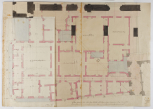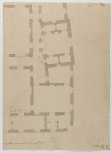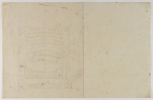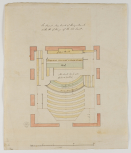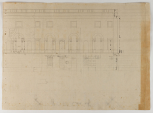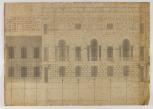Drawing
London: Palace of Westminster: The New Law Courts, surveys and designs, 1820-32 (507)
[292] Alternative design, New Law Courts, 29 May 1823
L[incolns] .I[nn] .F[ields]. / 29 May / 1823
4th. June 1823 (upper flyer)
3rd. June 1823 (lower flyer)
Possibly Stephen Burchell (1806 - c.1843), draughtsman
The Day Book entry for 29 May 1823 notes that Stephen Burchell was About the drawings of the New Courts at Westminster.
Possibly Edward Foxhall (1793 - 1862), draughtsman
The Day Book entry for 29 May 1823 notes that Edward Foxhall was About the drawings of the New Courts at Westminster. The Day Book entries for 3-4 June 1823 both record that the same draughtsman was About a Plan of the New Courts at Westminster, implying that he executed the flyers.
SM 53/2/39


